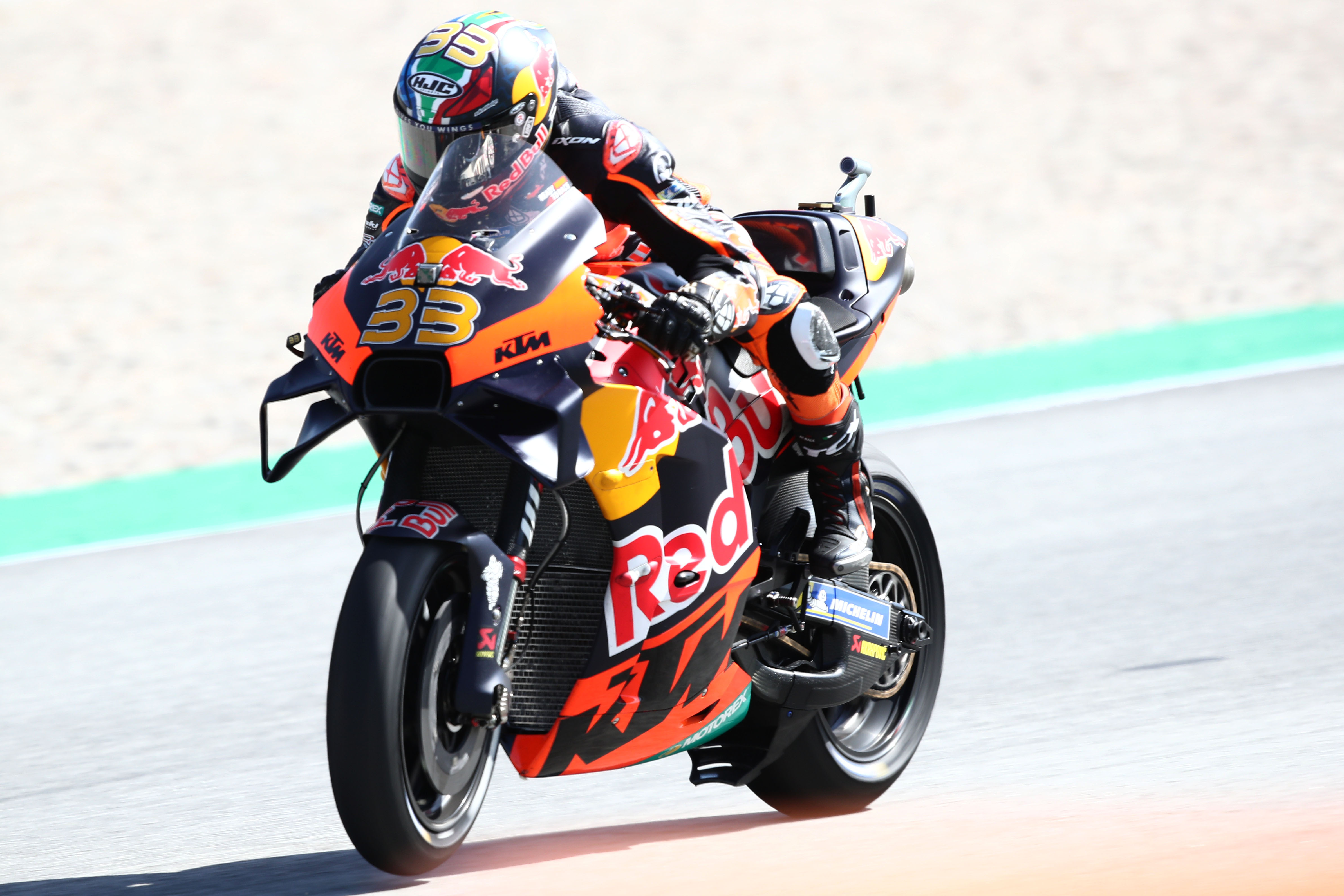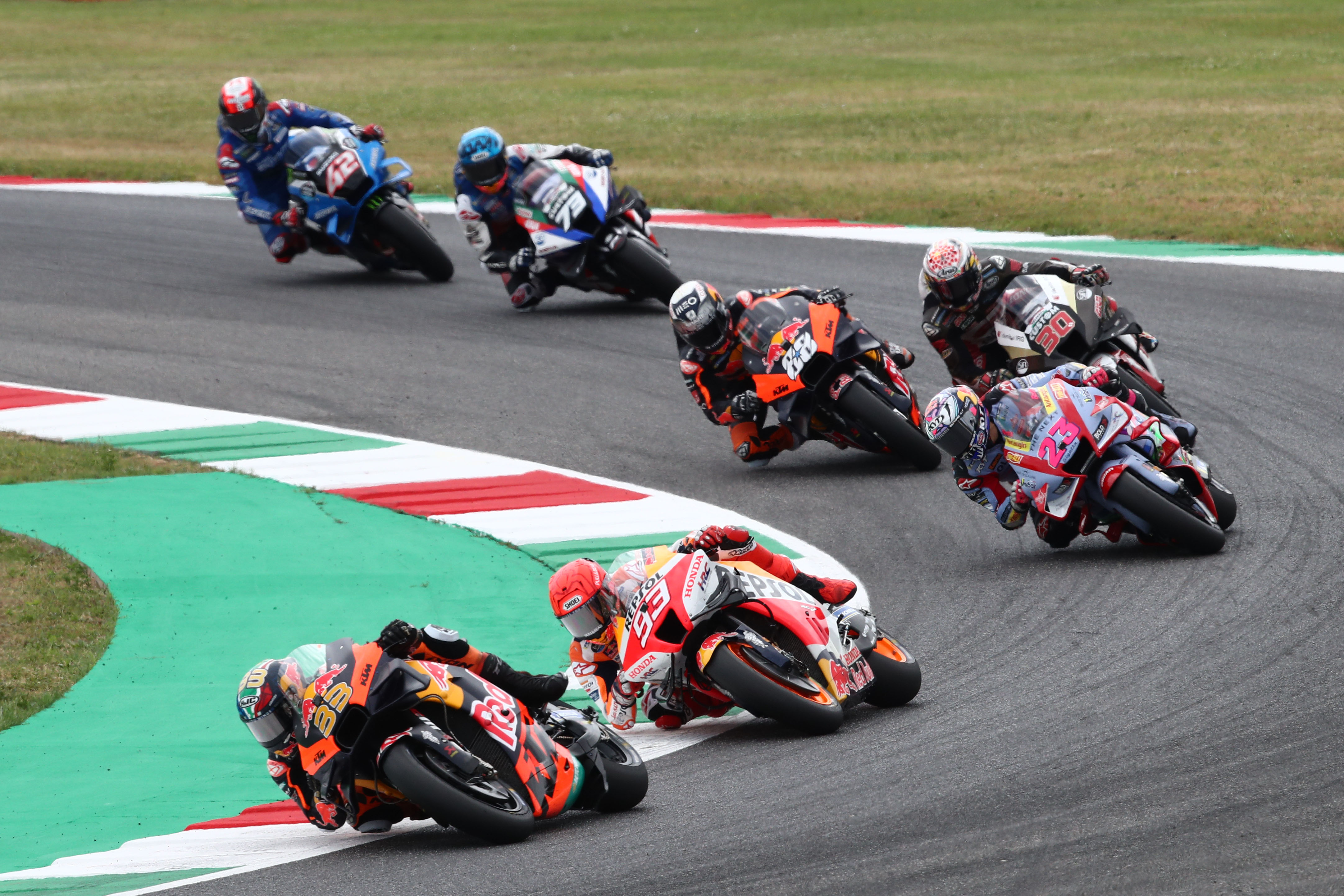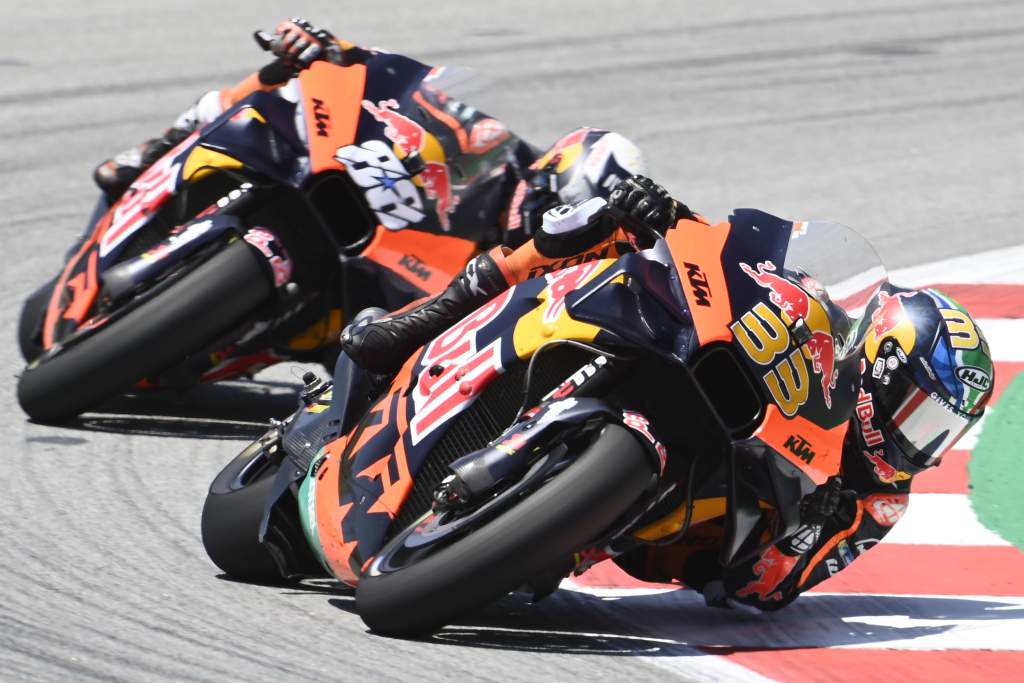“Is it going to be another rescue job?”
“I f***ing hope so.”
KTM’s top rider Brad Binder is no stranger to having recover a decent result after a rough MotoGP qualifying, and Barcelona proved no exception – as a 15th-place start was converted into seventh at the finish, Binder fighting off team-mate Miguel Oliveira.
These kinds of performances mean Binder is currently sixth in the standings, while KTM sits fourth of the six manufacturers – ahead of Suzuki, which will probably overtake it sooner than later, and Honda, which may well be consigned to that last spot for the rest of the season.
In any case, KTM’s continuing accrual of reasonable points hauls is fairly remarkable – because its qualifying form harks back to a time in which its MotoGP programme was a different beast entirely, and not in a good way.
In Barcelona, Binder mounted a valiant effort to haul himself up the grid, but was ultimately 0.033 seconds off the pace in Q1. Normally, this would be enough for a Q2 spot, but on this occasion it was only enough for fifth in the session and 15th on the grid.
And with the rest of the KTM contingent behind him, it meant that the manufacturer had no representatives in Q2 (not to mention no riders starting above 15th) for the fourth weekend running.
In theory that’s not too remarkable a drought, except it’s really uncommon in KTM’s six seasons of full-time MotoGP competition so far.

It obviously never missed four consecutive Q2s in 2020, its best year by far, but also during the disappointing 2021 follow-up. Or in 2019, when it had a disgruntled Johann Zarco on the books. Or in 2017, when the programme was brand new.
Only in 2018 was KTM a pretty regular Q2 absentee, and even then that was a year in which lead rider Pol Espargaro was battling injuries and the marque was relying on just two bikes (with the occasional Mika Kallio wildcard thrown in for good measure) rather than the four-bike fleet it now has with Tech3.
Average number of KTM riders in Q2
2017 – 0.65
2018 – 0.21
2019 – 0.74
2020 – 2.21
2021 – 1.17
2022 – 0.67
Does it mean KTM is back to where it was in 2018, four years of progress reduced to nothing? Clearly not. It would be supremely disingenuous to suggest so, especially as Binder was just four seconds off the winner as recently as a week and a bit ago at Mugello.
The simpler explanation is that the make-up of the grid has changed significantly – what with there being eight Ducatis now, each capable of qualifying very well either every time or at least occasionally – and the Tech3 roster comprising rookies who aren’t yet entirely up to speed.

But it’s something to take note of, especially in the context of Binder’s Mugello ride – in which he started 16th, was up to seventh on the first lap, lost some ground in the early stages and then basically completely matched race winner Francesco Bagnaia’s pace from the one-third mark to the finish.
The KTM is clearly not the Suzuki of recent years, which was reliably bad in qualifying and then reliably great in race trim. But the RC16’s balance certainly appears tipped in that way, enabling its riders to thrive on worn tyres but leaving them outmatched at the peak of the rubber, right?
Potentially, yes. But there’s also the possibility that it simply has better racers than qualifiers, one emphasised by the fact that Binder – never exactly renowned as a pole king but rather a masterful Sunday rider – has been either the top KTM or just a few hundredths off Miguel Oliveira in every single representative qualifying so far.
The source of KTM’s qualifying underperformance is worth thinking about, because it might not be gone even when the RC16 gets back to a better baseline level. Yet, with some genuine qualifying standouts in Jack Miller and potentially Pol Espargaro coming for 2023, KTM may get some welcome clarity on its bike’s full potential over one lap.





